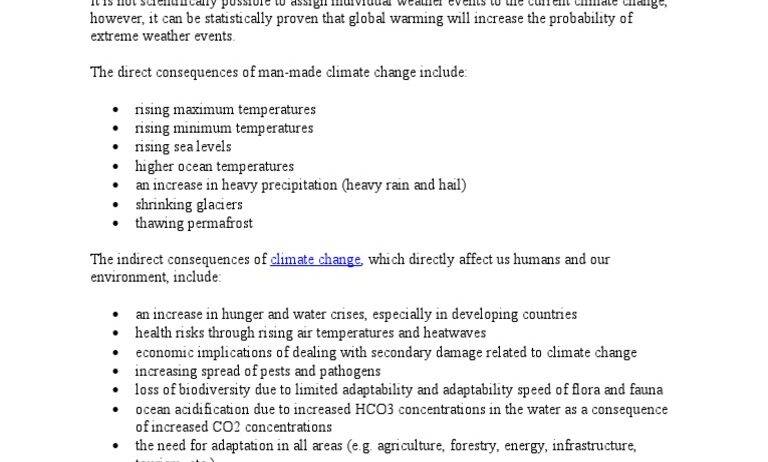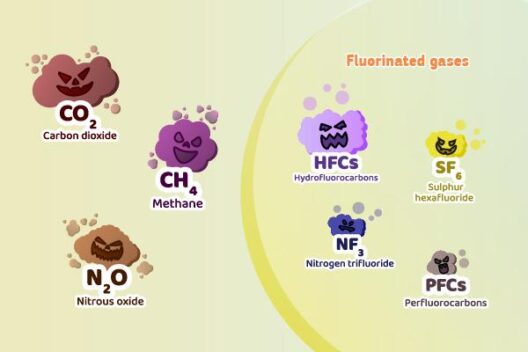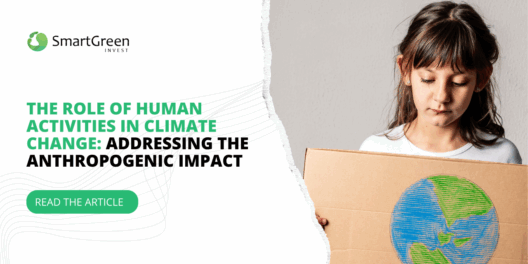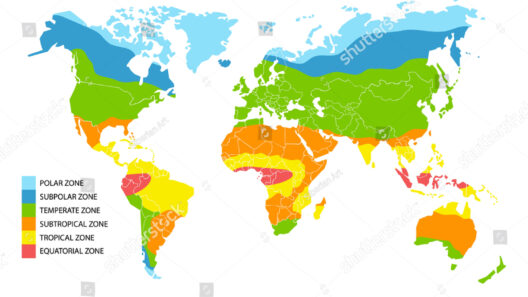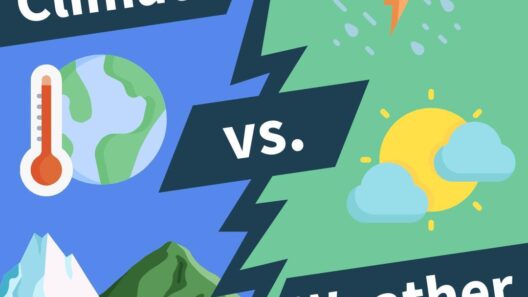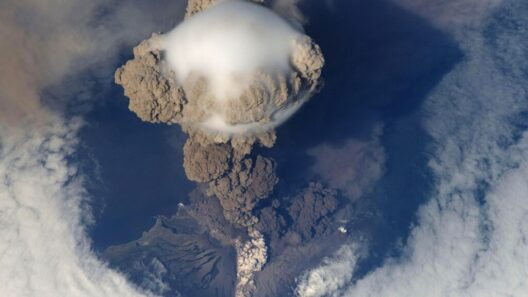Climate change, often referred to as an evolving specter, weaves an intricate tapestry of dire consequences that loom over our planet. It manifests not merely as a temperature increase; rather, it redefines our landscapes, economies, and social structures. Here, we delve into five compelling and stark realities of climate change, each acting as a harbinger of a world in transformation.
1. Disruption of Ecosystems: A Domino Effect
Nature is not a solitary player; it thrives on symbiotic relationships. The emergence of climate change shatters these delicate ecosystems, causing a ripple effect that can be likened to a row of dominoes toppling one after another. As the average global temperature climbs, habitats shift, forcing flora and fauna to adapt or perish. Coral reefs, often referred to as the “rainforests of the sea,” are especially susceptible. With ocean temperatures rising, coral bleaching is becoming increasingly prevalent, endangering marine biodiversity. This deterioration is not confined to aquatic ecosystems; on land, altered weather patterns disrupt the timing of blooms and migrations, leading to mismatches in food availability for myriad species.
2. Rising Sea Levels: The Inexorable Advance
Imagine a slow yet relentless tide encroaching upon the shore, claiming territory bit by bit. This is precisely what we face with rising sea levels, a consequence of both melting polar ice and the thermal expansion of ocean water. Coastal cities and communities, often seen as bastions of human ingenuity, stand on precarious ground. Cities like Miami and New Orleans are grappling with the imminent threat of inundation, leading to costly adaptations and, in some instances, eventual abandonment. The phenomenon is not merely environmental; it also engenders socio-economic ramifications, displacing populations and creating climate refugees.
3. Extreme Weather Patterns: Nature’s Fury Unleashed
Picture a symphony, once harmonious, now erupting into discordant chaos. This metaphor aptly illustrates the crux of extreme weather events exacerbated by climate change. Hurricanes, droughts, and wildfires are becoming more intense and frequent, leaving devastation in their wake. The recent spate of catastrophic wildfires in places like California and Australia paints a grim portrait of landscapes turned to ash. Each year, billions of dollars are spent on disaster recovery, and the toll on human life and health is incalculable. The unpredictability of such events evokes a sense of vulnerability, reminding us of the fragility of human settlements in the face of nature’s might.
4. Threat to Food Security: The Fraying Fabric of Agriculture
Climate change might be likened to a master puppeteer, pulling strings that ultimately dictate the availability of food across the globe. Altered precipitation patterns and increasing temperatures yield unforeseen consequences for agricultural production. Crops that previously flourished may falter, as droughts parch soils and floods wash away nutrient-rich lands. Particularly in developing nations, where subsistence farming anchors livelihoods, the stakes are alarmingly high. The ability to feed oneself and one’s family dwindles, resulting in an increase in food insecurity and malnutrition. Consequently, the specter of famine looms larger, exacerbated by economic instability and loss of arable land.
5. Public Health Crisis: A Silent Epidemic
The effects of climate change extend beyond the physical realm, infiltrating the very core of human health. It acts as a silent catalyst for public health crises, introducing an array of issues such as respiratory illnesses, heat-related conditions, and vector-borne diseases. Rising temperatures facilitate the proliferation of disease-carrying insects, such as mosquitoes, leading to an uptick in illnesses like malaria and dengue fever. Moreover, the mental health impacts, often overlooked, emerge as communities confront loss, displacement, and uncertainty about the future. This multifaceted health crisis underscores the integral link between a shifting climate and societal well-being.
In conclusion, the real-world effects of climate change are multifarious and insidious, weaving an intricate pattern that affects our planet’s ecosystems, our socio-economic structures, and our collective health. Addressing these challenges requires a concerted and informed effort, as inaction will only exacerbate the plight faced by humanity and the natural world alike. Each of us must become not just aware, but also active participants in combating the effects of climate change, fostering resilience in our communities, and advocating for sustainable practices. The harmony of our planet hangs in the balance, and it is our responsibility to restore equilibrium before it is too late.



